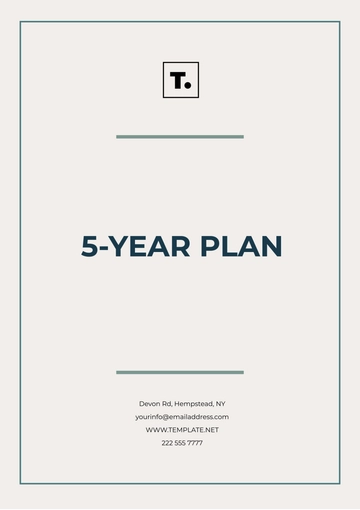Free Bookstore Plan

I. Executive Summary
This bookstore plan outlines the strategic vision, operational blueprint, and financial framework for [Your Company Name]. Our objective is to establish a thriving bookstore that not only provides quality literature but also fosters a community of book lovers in [Your Company Location]. We aim to create a welcoming atmosphere where customers can explore a curated selection of books across various genres, including fiction, non-fiction, children's literature, and academic texts. By offering personalized customer service, engaging author events, and book clubs, we aspire to cultivate a loyal customer base that sees our bookstore as a valuable resource and a cultural hub.
To achieve this vision, we will implement a robust marketing strategy that leverages social media, local partnerships, and community events to attract customers. Our operational blueprint will focus on efficient inventory management, staff training, and the integration of e-commerce to cater to both in-store and online shoppers. Financially, we are committed to sustainable practices, ensuring profitability while keeping prices accessible for our customers. Through careful planning and community engagement, [Your Company Name] aims to become a beloved destination for readers of all ages and backgrounds in [Your Company Location].
II. Company Overview
[Your Company Name] is a newly established bookstore located in [Your Company Location], dedicated to promoting literacy, fostering a love for reading, and serving as a community gathering space for book enthusiasts. Our bookstore will offer a carefully curated selection of books spanning various genres, including bestsellers, classics, young adult fiction, educational materials, and local authors' works. We will prioritize stocking titles that reflect the diverse interests and needs of our community.
Incorporating both physical and digital elements, [Your Company Name] will operate a vibrant storefront complemented by a user-friendly e-commerce platform, allowing customers to shop conveniently from anywhere. Our commitment to customer service will extend beyond traditional sales; we aim to provide personalized recommendations and host events such as book signings, readings, and workshops, thereby creating a dynamic environment that encourages discussion and community engagement.
As we navigate the competitive landscape of the retail book industry, [Your Company Name] is committed to adhering to all relevant US laws and standards, including copyright regulations, consumer protection laws, and local business ordinances. This focus on compliance, combined with our passion for literature and community involvement, positions us for success in cultivating a thriving bookstore that enriches the lives of our customers and contributes positively to the local economy.
III. Market Analysis
A. Industry Overview
The bookstore industry has undergone significant transformation due to the rise of digital media and e-books. However, physical bookstores continue to hold substantial value in the market. According to the American Booksellers Association, independent bookstores have experienced a resurgence, with a notable increase in sales over recent years. This trend is driven by a growing consumer preference for unique, personalized shopping experiences that large online retailers cannot replicate. Many customers are seeking local businesses that foster community engagement and offer curated selections of titles. Furthermore, the rise of events such as book signings, readings, and community gatherings has reinforced the bookstore's role as a cultural hub, enhancing customer loyalty and driving foot traffic.
B. Target Market
Primary Market
College Students: With [Your Company Location] being home to several colleges and universities, we aim to cater to the academic needs of students by providing textbooks, reference materials, and a selection of contemporary literature. By hosting study sessions, author talks, and writing workshops, we can create a space conducive to learning and collaboration.
Local Community Readers: Our primary focus will be on local residents who value literature and are looking for a place to discover new books. By offering a range of genres, including fiction, non-fiction, and children's literature, we can meet the diverse interests of our community. Loyalty programs and community events will encourage repeat visits and foster a sense of belonging.
Tourists: As a bookstore situated in a vibrant area, we will attract tourists seeking local literature, unique gifts, and souvenirs. By highlighting local authors and offering curated travel guides, we can enhance the visitor experience while promoting the literary culture of [Your Company Location].
Secondary Market
Schools: We aim to partner with local schools to provide educational materials, reading programs, and book fairs. By aligning with educators' needs, we can position ourselves as a trusted resource for enhancing students' literacy and learning experiences.
Libraries: Collaborating with libraries can open up opportunities for joint events and book donations, creating a network that promotes reading and literacy in the community. Libraries often look for local partnerships to host events, and we can be a vital contributor to their programming.
Book Clubs: Engaging with local book clubs can foster a loyal customer base. We can offer discounts on book club selections, host monthly meetings, and provide discussion guides to enhance the reading experience. By creating a space for dialogue and shared enthusiasm for literature, [Your Company Name] can become the go-to place for book clubs in the area.
IV. Marketing Strategy
A. Branding
Our branding strategy will position [Your Company Name] as a community hub for book lovers and a destination for quality reading materials. We aim to create a warm and inviting atmosphere that reflects our commitment to fostering a love of reading and promoting local culture. Our brand identity will be built around key values such as inclusivity, knowledge, and community engagement. This will be visually represented through our logo, store design, and marketing materials, which will emphasize a cozy, literary-themed aesthetic that appeals to our target audience. Through storytelling and community involvement, we will strengthen our brand's connection with customers, making [Your Company Name] synonymous with literary exploration and community enrichment.
B. Promotion
Promotion Strategy | Details |
|---|---|
Social Media Campaigns | We will utilize platforms like Instagram, Facebook, and Twitter to engage with our audience and promote our events, new arrivals, and special promotions. Content will include visually appealing posts, behind-the-scenes glimpses, author interviews, and user-generated content from customers sharing their reading experiences. Paid advertising on social media will target specific demographics, driving traffic to both our physical and online stores. We will also run contests and giveaways to encourage engagement and increase our follower base. |
Author Events and Book Signings | Hosting author events and book signings will create excitement and draw foot traffic to our store. We will invite local authors and well-known writers to share their work, engage with readers, and sign books. These events will not only increase sales but also solidify our reputation as a cultural hub for the community. By promoting these events through social media, local newspapers, and community bulletin boards, we can maximize attendance and community participation. |
Loyalty Programs | We will implement a customer loyalty program that rewards repeat purchases with points redeemable for discounts or special offers. This program will encourage customers to return to [Your Company Name] and promote a sense of belonging within our bookstore community. Additionally, we will offer exclusive early access to sales, special events, and personalized recommendations based on purchase history to enhance customer loyalty and engagement. |
V. Operations Plan
A. Store Layout
The store layout for [Your Company Name] will focus on creating an inviting and interactive environment that encourages exploration and fosters a love for reading. The design will prioritize open spaces that allow for easy navigation, featuring wide aisles and clear signage to guide customers through different sections. Key elements of the layout will include:
Dedicated Reading Corners: Cozy nooks equipped with comfortable seating and soft lighting will be integrated throughout the store. These areas will invite customers to browse and read in a relaxed atmosphere, encouraging longer visits and increased sales.
Event Spaces: A designated area for author events, book signings, and community gatherings will be a focal point of the store. This space will be flexible, accommodating both small group discussions and larger events, complete with seating arrangements, a podium, and audio-visual equipment as needed.
Genre Sections: Books will be organized into clearly marked sections based on genre, making it easy for customers to find their favorite titles. Special displays will feature new releases, staff picks, and themed selections to keep the inventory fresh and engaging.
Children’s Area: A dedicated section for children will be designed with vibrant colors, child-sized furniture, and interactive elements, such as storytelling corners. This space aims to create a welcoming atmosphere for families, encouraging young readers to engage with books.
Overall, the layout will reflect our commitment to creating a community-oriented bookstore that values customer experience and engagement.
B. Inventory Management
Efficient inventory management practices will be essential for ensuring a balanced stock of both popular and niche books at [Your Company Name]. Our approach will include the following strategies:
Regular Inventory Audits: We will conduct regular inventory audits to assess stock levels, identify slow-moving items, and analyze sales trends. This data will inform our purchasing decisions, helping us maintain an optimal balance between bestsellers and unique titles.
Supplier Relationships: Building strong relationships with publishers and distributors will enable us to access a wide range of titles and negotiate favorable terms. We will prioritize working with local authors and independent publishers to support regional literature and offer exclusive selections.
Inventory Management Software: Implementing an inventory management system will allow us to track sales data in real time, streamline ordering processes, and maintain accurate records. This technology will help us forecast demand more effectively and reduce instances of overstock or stockouts.
Customer Feedback Loop: We will actively solicit customer feedback regarding their reading preferences and desired titles. This input will guide our purchasing strategy, ensuring we stock books that resonate with our target market.
VI. Financial Plan
The financial plan for [Your Company Name] outlines the anticipated costs associated with launching and operating the bookstore, ensuring that we are well-prepared to manage our resources effectively. A thorough understanding of our financial commitments will be crucial for maintaining profitability and sustainability. Below is a breakdown of key expense categories and their estimated costs. This financial framework will help us make informed decisions and set realistic expectations as we establish our presence in the market.
Expense Category | Estimated Cost |
|---|---|
Lease/Rent | $5,000 per month |
Inventory | $30,000 |
The listed expenses reflect our commitment to securing a suitable location that attracts foot traffic and offers a comfortable shopping environment. The inventory cost is allocated for a diverse selection of books that cater to our target market, ensuring we have a well-rounded collection from the outset.
By carefully monitoring these expenses and adjusting our strategies as needed, [Your Company Name] aims to achieve financial stability and growth while delivering an exceptional experience to our customers.
- 100% Customizable, free editor
- Access 1 Million+ Templates, photo’s & graphics
- Download or share as a template
- Click and replace photos, graphics, text, backgrounds
- Resize, crop, AI write & more
- Access advanced editor
Organize your business strategy with this Bookstore Plan Template from Template.net. This customizable and editable template provides a comprehensive framework for outlining your goals, marketing strategies, and financial projections. Fully editable in our Ai Editor Tool, you can tailor each section to meet your bookstore’s specific needs, ensuring a well-structured and successful business plan.
You may also like
- Finance Plan
- Construction Plan
- Sales Plan
- Development Plan
- Career Plan
- Budget Plan
- HR Plan
- Education Plan
- Transition Plan
- Work Plan
- Training Plan
- Communication Plan
- Operation Plan
- Health And Safety Plan
- Strategy Plan
- Professional Development Plan
- Advertising Plan
- Risk Management Plan
- Restaurant Plan
- School Plan
- Nursing Home Patient Care Plan
- Nursing Care Plan
- Plan Event
- Startup Plan
- Social Media Plan
- Staffing Plan
- Annual Plan
- Content Plan
- Payment Plan
- Implementation Plan
- Hotel Plan
- Workout Plan
- Accounting Plan
- Campaign Plan
- Essay Plan
- 30 60 90 Day Plan
- Research Plan
- Recruitment Plan
- 90 Day Plan
- Quarterly Plan
- Emergency Plan
- 5 Year Plan
- Gym Plan
- Personal Plan
- IT and Software Plan
- Treatment Plan
- Real Estate Plan
- Law Firm Plan
- Healthcare Plan
- Improvement Plan
- Media Plan
- 5 Year Business Plan
- Learning Plan
- Marketing Campaign Plan
- Travel Agency Plan
- Cleaning Services Plan
- Interior Design Plan
- Performance Plan
- PR Plan
- Birth Plan
- Life Plan
- SEO Plan
- Disaster Recovery Plan
- Continuity Plan
- Launch Plan
- Legal Plan
- Behavior Plan
- Performance Improvement Plan
- Salon Plan
- Security Plan
- Security Management Plan
- Employee Development Plan
- Quality Plan
- Service Improvement Plan
- Growth Plan
- Incident Response Plan
- Basketball Plan
- Emergency Action Plan
- Product Launch Plan
- Spa Plan
- Employee Training Plan
- Data Analysis Plan
- Employee Action Plan
- Territory Plan
- Audit Plan
- Classroom Plan
- Activity Plan
- Parenting Plan
- Care Plan
- Project Execution Plan
- Exercise Plan
- Internship Plan
- Software Development Plan
- Continuous Improvement Plan
- Leave Plan
- 90 Day Sales Plan
- Advertising Agency Plan
- Employee Transition Plan
- Smart Action Plan
- Workplace Safety Plan
- Behavior Change Plan
- Contingency Plan
- Continuity of Operations Plan
- Health Plan
- Quality Control Plan
- Self Plan
- Sports Development Plan
- Change Management Plan
- Ecommerce Plan
- Personal Financial Plan
- Process Improvement Plan
- 30-60-90 Day Sales Plan
- Crisis Management Plan
- Engagement Plan
- Execution Plan
- Pandemic Plan
- Quality Assurance Plan
- Service Continuity Plan
- Agile Project Plan
- Fundraising Plan
- Job Transition Plan
- Asset Maintenance Plan
- Maintenance Plan
- Software Test Plan
- Staff Training and Development Plan
- 3 Year Plan
- Brand Activation Plan
- Release Plan
- Resource Plan
- Risk Mitigation Plan
- Teacher Plan
- 30 60 90 Day Plan for New Manager
- Food Safety Plan
- Food Truck Plan
- Hiring Plan
- Quality Management Plan
- Wellness Plan
- Behavior Intervention Plan
- Bonus Plan
- Investment Plan
- Maternity Leave Plan
- Pandemic Response Plan
- Succession Planning
- Coaching Plan
- Configuration Management Plan
- Remote Work Plan
- Self Care Plan
- Teaching Plan
- 100-Day Plan
- HACCP Plan
- Student Plan
- Sustainability Plan
- 30 60 90 Day Plan for Interview
- Access Plan
- Site Specific Safety Plan





























